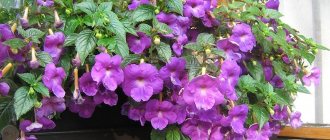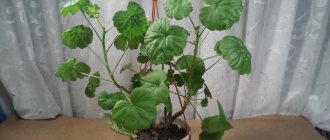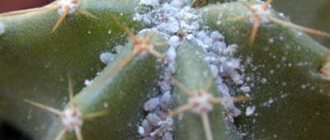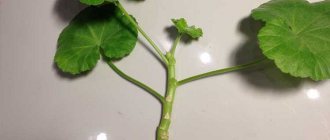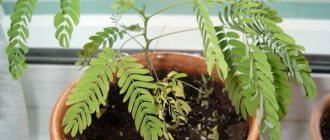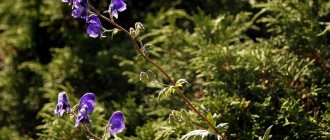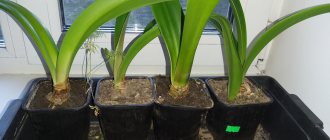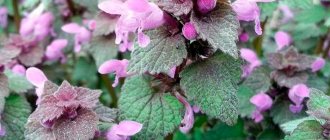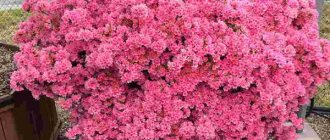Before you root plumeria, you need to carefully study the theory. This will allow you to grow exotic plants at home. The tree naturally grows to 1.5–3 m in height, and its homeland is considered to be the Caribbean islands, Central America and Mexico. You can grow plumeria at home if you follow the appropriate temperature and light conditions. Propagation of plumeria is possible both by seeds and cuttings. The second method will allow you to get a tree that will retain all the external characteristics and qualities of the parent, while plants grown from seeds may differ.
Common varieties
Red plumeria is considered a popular variety of the crop.
Growing rhododendron plumeria is considered a very labor-intensive task. To achieve success in this matter, you can choose the following varieties.
Plumeria obtuse
Under natural conditions, it is a not too tall evergreen tree, which reaches 3-5 m. There are also semi-dwarf species that grow to a maximum of 1.5 m.
In indoor conditions, you can grow a dwarf variety - Plumeria obtusa. This is a compact crop, the branches of which grow to a maximum of 30-40 cm. It is decorated with dark green velvety foliage. The reverse side of the foliage is covered with fine fluff. It has a gray-green color.
- Leaves do not exceed 20 cm.
- The flower includes 5 white petals, which are collected on a long peduncle. The extreme parts are slightly bent.
At the same time, half of the petal has a bright yellow tint. The flowers of this plumeria are characterized by a pleasant aroma with jasmine notes.
Plumeria white
The Caribbean islands are considered the homeland of this plant. The culture there is classified as medium-tall plants.
Note! During dormancy, partial leaf fall is observed. The leaves have a smooth leathery surface and a dark green color.
On the reverse side they are silver
The leaves have a smooth leathery surface and a dark green color. On the reverse side they are silver.
Flower petals are slightly curled. They are also characterized by a short peduncle. The petals are characterized by a fairly dense arrangement. There is a small pale yellow eye in the central part.
Red plumeria
Under natural conditions, a plant can have 2 varieties - a shrub or a tree.
The culture is considered semi-deciduous. It is characterized by slightly pointed leaves. The plant is decorated with red flowers. This variety is characterized by a variety of varieties.
There are species that have inflorescences with several large flowers. There are also varieties whose inflorescences include 30 or more flowers. Multi-colored varieties look very original.
What does plumeria look like and what family does it belong to?
Plumeria is characterized by spectacular flowering
According to the description, plumeria is a flower from the Kutrov family. Under natural conditions it grows in tropical and subtropical climates. The flower can look like a tree or a bush. The culture is characterized by thick, succulent stems. They are decorated with ovoid, leathery leaves, which are covered with a protruding pattern.
The bush is decorated with large and fragrant flowers, which form large inflorescences in the upper part of the shoots. They differ in size, shape, and color. Even the degree of flower opening varies depending on the species.
Plumeria can bloom white, red, pink, yellow. Multi-colored buds look very impressive. With proper care of plumeria at home, you can achieve lush and long-lasting flowering.
For reference! The saturation of the shade is determined by the conditions of detention. In warm weather the buds become brighter. In older flowers they gradually fade.
History of appearance
According to myths and legends, the Marquis of Frangipani and the court botanist Charles Plumier were involved in the appearance and spread of this extraordinary plant. However, there is no exact information regarding the origin of the culture. However, these legends explain the meaning of the flower's name.
Plumeria frangipani can be found in tropical climates. This flower grows in South America, the Caribbean Islands, and Mexico.
The indigenous population of Thailand considers culture to be their national symbol. It is often called Plumeria Pattaya. The hotels Resort Pattaya, Plumeria Maldives are named after plumeria. And also a store in Kstovo, named after plumeria, which once again confirms its popularity.
Note! In many tropical countries, the flower symbolizes eternity and immortality. In Thailand, not a single ceremony takes place without this plant - a wedding, the birth of children, and even a funeral.
Interesting varieties
Most natural varieties are suitable for home growing. Plumeria in a pot slows down its growth so it doesn't grow too big.
- Plumeria red. In the wild, it sheds its leaves in autumn. Flowers with a waxy coating, dense, fragrant, are collected in large inflorescences. The leaves are dark green, oblong.
- White plumeria (Hawaiian). In nature it reaches 4-5 meters in height. Habitat: Caribbean Islands. The leaves are oblong and boat-shaped. The flowers are five-petaled, white with a yellow center. The smell is strong, reminiscent of citrus.
- Plumeria dulled. Another name is adenium. The natural habitat is Africa. An evergreen plant with flowers that exude a citrus aroma. The variety is suitable for bonsai formation.
Important tip! Immediately after purchase, it is not recommended to place the flower in a sunny place. He needs to adapt to new conditions. Keep the plant in a shaded place for about a week, away from other indoor crops. Get used to the sun gradually.
Actions after purchase
The plant comes to the store counter from a greenhouse in which an ideal microclimate has been created for the development of the crop. It is transported and sold in a container with rather poor soil. Therefore, plumeria cannot live long in such an environment. However, there is no need to rush with the transfer. Florists give three recommendations on how to ensure proper care of the plant after purchase.
- Arrange a quarantine. The flower is experiencing real stress from changing its place of residence. Therefore, he needs to settle into new conditions. Give your new pet one week to get used to it. Find it a place with calm, diffused light, without drafts and separately from other plants, do not water or rush into feeding.
- Track status. After quarantine, “relocate” the tropical plant to the sunniest windowsill. Provide plumeria with proper care. Watch carefully how the flower reacted to a new place, watering, lighting. If he doesn't like something, he will immediately let you know about it.
- Take your time with the transfer. Despite the scarcity of soil, it is best to leave it in this container. But if the roots are peeking out of the pot, then replanting cannot be avoided.
Immediately after purchase, you should not expose plumeria to the sun. In the store, she most likely received diffuse lighting, so aggressive rays could cause burns. It is necessary to gradually accustom the tropical beauty to bright light.
How to plant plumeria from seeds at home
Usually, plumeria seeds are propagated by those gardeners who really like to work with indoor plants and watch how their development occurs. This method is interesting because as a result you can get a flower that is different from the mother plant, for example, with the original colors of the petals or leaves. As a rule, varietal qualities are not preserved during seed propagation.
To successfully grow from seeds, you need to prepare a container for planting, soil and seed.
Selecting a container for planting
Suitable for planting plumeria seeds:
- individual plastic pots;
- long wide flat boxes;
- plastic greenhouses.
The container must have drainage holes.
Find out more about how to properly plant indoor flowers in a pot.
Tillage
To germinate seeds, it is necessary to prepare a loose and light substrate. You can buy it in a store or make it yourself.
You will need to mix:
- 2 parts humus;
- 1 part sand;
- 1 part peat;
- 1 part vermiculite.
Store-bought soil does not require treatment. The manufacturer has already etched it. Therefore, he is completely ready for landing.
Soil mixed with your own hands must be disinfected.
There are several ways to do this:
- Pour in a solution of potassium permanganate (1%).
- Heat in the oven or microwave at a temperature of +90...+100°C for 25 minutes.
- Steam in a large container: pour ½ or 1/3 of water into it, place a colander covered with a cloth on top, add soil, cover with a lid. The soil should be kept above boiling water for 20–30 minutes.
- Freeze twice.
Seed selection and preparation
Plumeria produces lionfish-shaped seeds. If you collect them yourself, then you should select those in which the root primordium is visible, and the largest ones. Immediately before sowing, they are soaked in various ways:
Method 1:
- Place the seed in any growth stimulator for 15 minutes. Epin, NV-101, and potassium humate are suitable.
- Wrap the seeds in a damp cloth.
- Place the fabric in a glass and plastic container, which is placed in a warm and well-lit place.
- Periodically spray the fabric with water from a spray bottle.
- After a day, the seeds are ready for planting.
Method 2:
- Soak the seed in warm water for 3-4 hours.
- After removing them from the water, dip them in hydrogen peroxide 3 times.
- Dry.
- Make holes in the cotton pad and place the seeds in them so that the lionfish sticks up.
- In this position, place the seed in a flat container with warm water.
- After the roots appear, about a week later, plant the seeds in a planting container.
Find out how to grow other decorative flowering indoor plants:
Landing technology
You need to plant seeds in the ground as follows:
- Pour the soil substrate into the container.
- Make a depression in the center.
- Place the seed in it with the lionfish facing up completely or ¾ of the way up.
- Lightly compact the soil.
- Moisten with a spray bottle.
- Cover the container with glass or a plastic bag.
Reproduction
Propagating plumeria is quite simple; this process is carried out using cuttings or seed material.
Seed propagation of plumeria
Plumeria seeds are quite large, reaching 3 cm in length. On one side it has a seal in which the seed itself is located.
On the reverse side there is a translucent tail. The seed is completely buried in the soil.
The best option is mini-greenhouses. The soil should be light, loose and moisture-absorbing.
It is allowed to plant seeds in peat tablets, which contain all the required microelements for their proper development.
The seeds are immersed with the tail up; they do not need to be completely covered with soil - the end can protrude 1 cm from the ground.
The soil should not dry out, it is also necessary to monitor the temperature regime - the thermometer readings must be constant, within 22-25 ̊C.
The greenhouse should be located in a well-lit area.
Often, about 7 days pass from the moment of planting until the first seedlings appear.
Next, you need to remove the cover to ensure the possibility of active growth.
If the seeds are germinated in peat tablets, then the seedlings are distributed into the pots along with them, and the tablet is sprinkled with soil on top. But the first flowering of the plant will occur only after 1 year.
Cuttings
The plant begins to bloom with this option after 2-3 months. It is advisable to carry out cuttings in the spring.
The length of the cutting should be 40-45 cm.
Plumeria cuttings in a pot
Important! Green young shoots are not suitable for cuttings; they must be last year’s and woody.
During pruning, the plant releases large volumes of juice, which is poisonous, so all manipulations must be performed with protective gloves.
After cutting the cuttings, they should be washed with running water so that all the juice is washed away. The sections are well dried for 1-2 days in the open air.
Afterwards, the cuttings are placed in warm water mixed with root for 2 days.
The soil for rooting must be light; a universal soil mixture is suitable, to which you need to add fine sand in a ratio of 2 to 1.
To increase moisture capacity, you need to mix in a handful of perlite per 3 liters of soil.
There must be 2 cm of drainage at the bottom of the pot. The soil must always be warm to prevent rotting of the cuttings.
The container with the cuttings is placed in a lighted place in a warm room. Rooting takes about 2 months.
When the root system fills the first container, you need to transplant the plumeria into a permanent pot.
Planting process
Some gardeners recommend planting each seed in a separate container, rightly citing the fact that plumerias do not like transplants. Others use wide flat boxes or plastic greenhouses, no less justifiably noting that in this case caring for the flower will be simpler and safer for it.
Important! The method of seed propagation of plumeria has a serious disadvantage (or advantage). The probability of repeating the varietal characteristics of the parent plant is practically zero, and the grown daughter plant will be unique
For seed propagation of plumeria domestica, experts recommend using red plumeria (Plumeriarumba) seeds.
Planting is done as follows:
- in the center of the container (pot) it is necessary to make a small hole in the substrate;
- Lightly insert the seed perpendicularly with the lionfish facing up (it should be completely buried in the ground or at least three-quarters, but the lionfish should be above the ground). Lightly press down the soil around the seed;
- moisten the substrate and cover with polyethylene or glass.
Growing Plumeria
From seeds
Please note right away that growing Plumeria from seeds at home will require a lot of time and effort from you. In addition, the germination rate of Frangipani seeds is very small, and there is no guarantee that a specimen grown from seeds will take on all the properties of the parent.
Seeds are collected no earlier than 10 months, when they reach maturity. The seeds grow in fruit pods, which after harvesting need to be prepared for planting.
- Before this, they are placed between two pieces of fabric for 2-3 hours, after wetting them in warm water.
- In order for the maximum number of seeds to sprout, a growth stimulator can be added.
After preparation, the seeds are planted in a moist substrate. They need to be stuck in such a way that one quarter of the seed remains above the ground. Transplanting seedlings is a rather traumatic procedure. To avoid this, you can immediately sow the seeds in separate pots, covering them with glass or film.
After the seedlings appear, they need to be provided with proper care - from this moment the glass is removed and they begin to be regularly watered and ventilated.
You also need to pay attention to the temperature in the room, which should not fall below 23 degrees Celsius. In addition, you need to take into account the decrease in temperature during the day, otherwise the seeds may not withstand it and will rot.
Approximately on the tenth day after sowing, the seeds take root and stems appear. However, under unfavorable conditions, the first seedlings may appear within a week to three weeks.
Young seedlings have cotyledons, from which it is advisable to remove a thin film, otherwise the cotyledons will begin to rot because of it, and this will lead to the death of the entire plant.
Once the seedlings have grown sufficiently large leaves and the roots have become stronger, you can plan to transplant them into a large pot.
While waiting for flowering, you will have to be patient. This moment will not occur earlier than in two and a half years.
If you decide to grow Frangipani from seeds or cuttings at home, then it will only be able to delight you with its flowers a few times a year. Although its ancestors, growing in the tropics, bloom throughout the summer.
Propagation by cuttings
It is this method that is most often used when growing Plumeria at home. And this is not surprising considering that it is very simple. After waiting for the Plumeria flower to go into a dormant state, they begin to prepare cuttings, which should be 25-30 cm long, and the cut should be made at an acute angle. Next, they need to be planted in a greenhouse. In case of its absence, you will have to wait for the onset of favorable weather conditions, and until this moment the cuttings can be kept in an apartment where nothing will happen to them. Before storing the cuttings, you need to tear off all the leaves from them, otherwise they will take up moisture that they do not need now.
During planting, the cuttings are placed in the ground to a depth of no more than 10 cm. But first, the cut site must be kept in a root-forming preparation. After this, the container with the cutting is transferred to a warm, bright room, where it is kept until rooting. Although it may seem like there is nothing complicated about it, if not cared for properly, the cuttings can rot.
To do this, you need to know the features of irrigation. For the first time, the cuttings are watered immediately after planting and abundantly. In the future, procedures are carried out only when the soil dries out. Please note that the process of rooting cuttings is quite lengthy - on average it takes about 3 months. After the leaves appear on the cuttings, watering should be increased slightly. When it becomes clear that they are actively growing, you can think about transplanting them into a pot of soil.
What is plumeria
Plumeria flowers fascinate with the beauty of their petals and delicate aroma.
Plumeria is a genus of tropical trees of the Kutrovaceae family. They are distributed throughout the globe - South and Central America, the Caribbean, California, Southeast Asia, Oceania. Under natural conditions, the height of the tree is 8–10 m, but at home it is reduced to 2 m. Some types of plumeria are even suitable for forming bonsai.
Plumeria is widely used in landscape design in hot countries.
Even a plumeria grown in a small pot is unmistakably identified as a tree. It has a trunk and rather thick (2–5 cm) branches. The leaves are smooth, glossy, with clearly visible veins, dark green in color. Sometimes there is a noticeable grey, reddish or purple tint. In most varieties, the underside of the leaf blade is slightly pubescent. The leaf shape is oval or lanceolate, with a pointed tip. Under natural conditions, the leaf length reaches 40–45 cm, width 10–15 cm; at home, the parameters are reduced by approximately three times.
Inflorescences form on the tops of young shoots. The flowers are distinguished by their size (up to 5 cm) and amazing aroma. Plumerias with five-petaled flowers are the most common, but 4, 6 or 7 are also quite normal. A characteristic feature is that the petals seem to be layered on top of each other. The colors are varied - snow white, vanilla, cream, pale yellow, lemon, beige, pastel and hot pink, salmon, peach, reddish, lilac. There are also various combinations of them - such trees look even more impressive.
Those who are planning to grow plumeria should know that the sap of the plant is very poisonous. This property also has a positive side - the tree practically does not suffer from diseases and pests. The only exception is the spider mite. For a gardener, this means carrying out any care procedures only with rubber gloves. And if the juice does get on the skin or mucous membranes, it should be washed off immediately under running cool water.
In a pot, plumeria looks no less impressive than in natural conditions
The tree needs a period of rest, since abundant flowering takes a lot of energy. Don't be alarmed when it starts to shed its leaves in late fall - this is completely normal. The period lasts from 20 to 45 days.
Plumeria can be propagated by seeds - this is the only way provided by nature itself for all varieties of this tree. The seeds ripen in fruits that resemble round green or brownish pods about 8–10 cm long. They should be removed only when the pods dry out and wrinkle. If they are smooth and fleshy, this means that the seeds are not ripe. Under natural conditions, ripe pods fall to the ground on their own, but at home this happens extremely rarely. Their normal ripening period is 8–10 months.
Plumeria seeds ripen in such pods
Description
In nature, trees can reach 3-7 meters in height. The shoots are gray-brown, thickened, glabrous, ending in rosettes of leaves. Currently, miniature hybrids have been created for growing at home.
Their height usually does not exceed one and a half meters. In addition, they are more branched and, therefore, are characterized by abundant flowering, since flowers in all representatives of the genus are formed on the tips of the shoots.
Indoor adenium, care and reproduction
Plumeria leaves are dark green, elongated, leathery, sometimes with a purple, brown or gray tint. They can be round or pointed at the ends, smooth or corrugated.
A visible central vein divides the leaf into two symmetrical halves, each of which is lined with parallel raised veins. The stems and leaves contain a milky sap that, if it comes into contact with the skin, causes irritation and burning.
Wax flowers are quite large, 5-10 cm in diameter, collected in inflorescences of 18-20 pieces. Their intense aroma with notes of gardenia, citrus and spices is highly valued in perfumery and cosmetology. The smell intensifies in the evening and at night, since in nature the plant is pollinated by night moths.
Blooming plumeria variety Tricolor
The flowering period occurs at the beginning of summer and lasts until autumn. Depending on the species and variety, the color of flowers can be white, cream, yellow, red, pink, blue, lilac, two-color or three-color.
With artificial pollination, seed pods are set, which take 8-9 months to ripen. A sign of ripening is the wrinkling of the outer shell and the appearance of a crack along the entire length of the pod. Ripe seeds can be stored dry for about 3 months. Later they lose the ability to germinate.
Growing seeds and caring for sprouts
Growing plumeria from seeds at home is painstaking and sometimes futile work. The chances of getting decent specimens are great only for patient and convinced gardeners. And although the result of growing is not always positive - the frangipani babies are not particularly similar to the mother plant - the likelihood of completely accepting the conditions of the local climate is high, and it is also quite an exciting activity.
There are two methods of propagation - seeds and cuttings:
- As a result of the wilting of plumeria inflorescences, carob-shaped fruits are formed on the flower tassels, in which seeds develop. Ripe fruits can be stored for several years in cool conditions. However, the germination rate of such seeds is directly opposite to the duration of their storage. Remaining on the branches, the seeds ripen in just over 9 months, after which they are removed from the fruit pod in preparation for sowing. They are soaked for several hours in a stimulating solution at room temperature and sown in peat soil. A beacon is left on the surface - the lionfish of the seed. Good germination of seeds is possible only in greenhouse conditions, subject to the following parameters: high humidity, temperature 27 degrees Celsius, daily ventilation. Greenhouse care at home is very simple: the container with seedlings is covered with transparent material and installed in the warmest and brightest place in the room, the temperature inside is monitored. As needed, irrigation is done with warm soft water using a spray bottle. The seed germination process takes up to two weeks with proper care. Plumeria obtained from seeds can boast of flowering only after reaching three years of age. Growing in this way is quite ineffective compared to methods for growing plumeria at home through cuttings.
- Cuttings are a simple and therefore widely used method of propagating plumeria flowers. The optimal time for taking cuttings is the stage of preparing the plant for rest. After the frangipani flowering phase, pruning of wilted racemes is recommended. An exception is pollinated inflorescences (if the flower is planned to be propagated by seeds). 20-centimeter petioles are cut obliquely with a disinfected blade, the lower part of the sprouts is treated with root and the cuttings are placed in the soil up to half the stem. The container with the shoots is thoroughly spilled with purified water. Subsequently, watering is carried out as needed. With a sufficient abundance of light and heat, rooting will not take long. The adaptation period within the framework of the agreed supervision and care of plumeria at home takes up to three months. As the seedlings grow, periodic transplantation into a larger container is indicated. With conscientious care, a rooted plant will certainly reward you with spectacular flowering, usually after the second year of life.
Growing problems, diseases and pests
Plumeria in indoor conditions is a fairly resistant plant and is rarely affected by diseases and pests. But regular inspections of plants are still necessary.
Sometimes plumeria is attacked by spider mites. This is a very small insect that sucks juice from leaves. It is not always possible to notice it with the naked eye, but small white dots on the upper side of the leaf and grains on the bottom should alert you. Most often, the appearance of spider mites occurs from dry air, so the first means of combating the parasite is to increase humidity.
First, you need to wash the leaves with a damp cloth to wash away the pest, then spray with any insecticide. For indoor conditions, it is better to use Fitoverm - it is a biological preparation, it is less toxic than chemicals. To prevent the problem from reoccurring, it is necessary to spray the plant more often and try to increase the humidity in the room by any means.
If plumeria spends the summer in the garden, then inspections for the appearance of diseases and pests should be daily. And it is always easier to prevent a problem than to treat a plant for a disease. Therefore, it is better to carry out preventive spraying with an insecticide against insect pests and after 7-10 days with a fungicide against fungal diseases. Plumeria, like other tropical plants, can sometimes be affected by a fungus, so prevention will not be superfluous.
Growing plumeria is not particularly difficult and is rather a fun activity. It grows quickly, does not require special conditions, and blooms beautifully and for a long time, while emitting a pleasant aroma. Sun, humidity and warmth are the main conditions for successful cultivation, and, of course, space, because plumeria is a tree and you need to think about where it will be located when it grows.
Problem solving
Pests and diseases
Pests do not like plumeria because of its poisonous juice; only spider mites are afraid of it. Because of it, thin cobwebs appear on all parts of the plant. Spraying with Fitoverm (2 ml per 1 liter of water) or insecticides Temik, Aldicarb, Karbofos will save you from ticks. Follow the instructions. The mite prefers dry places, so preventive measures include sufficient watering, spraying the leaves with water and wiping off dust, as well as removing faded flowers and dry leaves.
Among the diseases, root rot is dangerous (occurs due to waterlogging). If the size of the plant is still small, it needs to be removed from the pot, washed the roots, and removed damaged areas. Soak healthy roots for several minutes in a fungicide solution (for example, use Vitaros - 2 ml per 1 liter of water, Oksikhom - 10 g per 5 liters of water). Plant the plant in new soil.
Table: care errors and ways to eliminate them
| Signs | Cause | Solution |
| Stems become longer and thinner | Warm atmosphere, but not enough light | Provide adequate lighting |
| Pale leaf color | ||
| Yellowing of leaves | Excess or lack of moisture | Adjust watering |
| Leaves fall | Lack of moisture | Ensure regular proper watering |
| Rotting of the trunk and roots |
|
|
| Plumeria doesn't bloom, although it's time | Rules of care violated |
|
Home care
Plumeria, although an unpretentious plant, still requires compliance with care rules.
Site selection and temperature
Like a tropical plant, it loves bright light, without which it cannot bloom. Therefore, northern windows are completely contraindicated.
The best option is the south side, but it can be placed on the east and west, especially if there is additional lighting.
In summer, the flower can be placed on the balcony or in the front garden, but gradually accustom it to direct rays of the sun. In this case, it is necessary to protect from drafts, precipitation and strong winds. Bright midday light can cause the color of the inflorescences to fade.
Refers to heat-loving plants, the optimal temperature is 25-30 degrees in summer. In winter, the temperature is gradually lowered until a threshold of 15 degrees is reached.
Humidity and watering
High air humidity is required, which can be provided by regular spraying every day.
Also, to create optimal humidity, it is recommended to fill the tray with moss, pebbles, expanded clay and moisten it with water.
During the growing season, watering should be frequent and abundant. It is carried out as soon as the surface of the soil in the pot dries. For irrigation use soft, non-calcareous water at room temperature. You can settle with tap water or use boiled, rain and melt water.
During the rest period, watering is slightly reduced, however, without allowing the earthen ball in the pot to dry out completely.
Plumeria grows and develops quite quickly, so it requires additional feeding with nutrients. For it, you can use mineral fertilizers in combination.
Ready-made fertilizers from the store for beautiful flowering plants are quite suitable. You can apply fertilizers either into the soil or use the foliar method by spraying the leaves with a liquid form.
For the most magnificent flowering of plumeria, phosphorus is necessary. It is necessary to fertilize from the beginning of the growing season every 14-15 days. When the plant begins to rest, feeding stops completely.
Rest period
It is quite short - from 3 to 6 weeks. At this time, plumeria completely stops growing and sheds old (last year's) leaves. New ones, grown the day before, remain on the tree. The end of the quiet period is marked by the appearance of young shoots and leaves.
Since plumeria grows at home as a small tree, it needs pruning to rejuvenate the entire plant and form a crown. It is carried out immediately after the end of winter rest. A tool (garden knife or pruning shears) should only be taken with a sharp edge and previously disinfected with alcohol.
When pruning, we must not forget that flowers on plumeria appear only on young branches formed in the current year. Cut branches can be used as cuttings for propagation.
Read our article for gardeners' recommendations for caring for gardenia.
Why doesn't calla lily bloom? Find out the answer to this question from our article.
Young plants need to be replanted every year; more mature trees are replanted every two years. The procedure is carried out in early spring, just before the start of the growing season. The container is replaced with a new one, 2-3 cm larger in diameter. If it is impossible to increase the size of the pot, trim the lateral roots of the tree.
Optimal soil composition:
- humus (1 part);
- peat (1 part);
- sand (1 part);
- turf soil (2 parts).
Peat can be replaced with perlite or vermiculite. Experienced gardeners recommend adding crushed eggshells to the mixture. A drainage layer of pebbles, broken bricks or expanded clay is laid at the bottom of the container.
Home care
By properly caring for your crop, you can grow a healthy plant that will delight you with gorgeous blooms every year.
Lighting
Plumeria, like rhododendron, belongs to the category of light-loving plants. Experts recommend placing flower pots near windows on the south side. Every day the crop should be illuminated by direct sunlight for at least 6 hours. Otherwise, flowering will not occur. You can also place containers on window sills on the west or east side. In the summer, it is advisable to place tubs of flowers on the balcony or take them out into the garden. On particularly hot summer days, it is better to shade the indoor plant with a special garden net to avoid sunburn on the leaf blades.
Important! Do not allow raindrops to fall on the green mass of the ornamental crop. It is also worth protecting the plant from drafts
Temperature
Plumeria is a heat-loving crop. From mid-March until the very end of summer, the room temperature should be between 26-30 °C. In autumn, the temperature regime should be slightly reduced, and with the onset of spring, a drop in temperature to 18 °C is permissible.
Features of watering
In the cold season, the soil is moistened as the top layer of soil dries out. For this purpose, it is recommended to use soft, settled water. In the warm season, the soil is moistened every 2 days
However, it is important to ensure that the soil is not swampy. Against the background of waterlogging, the risk of rotting of the root system increases
On cloudy days, you can refuse watering.
Humidity
During the period of active growth, plumeria (frangipani) needs systematic spraying. For this purpose, it is recommended to use soft, settled water. To help increase the level of humidity, it is recommended to fill the pallets with a layer of expanded clay, which must be pre-moistened. The soil located on the surface of the bottom of the container should not come into contact with the liquid that is in the pan.
Perennial needs proper care
When spraying, you should avoid getting water on the flowers.
Feeding
Experienced gardeners recommend applying fertilizing that will accelerate growth and compensate for the lack of micro and macroelements. You can purchase fertilizer at any gardening store. Feedings intended for beautifully flowering plants are suitable. Fertilizers can be:
- root (applied when the soil is moistened under the root system);
- foliar (a type of fertilizer that is intended for spraying leaf plates).
When using supplements, it is important to carefully study the instructions for the drugs to avoid overdose. It is best to alternate the application of root fertilizers with foliar fertilizers.
For spraying, it is recommended to reduce the dosage of the product indicated by the manufacturer.
By following the recommendations of experts, caring for flowers will be quite simple.
Transplanting a plant
Plumeria is transplanted at the end of March. Young plants need to be replanted annually into larger containers. Bushes older than 5 years can be replanted every 2-3 years.
White variety
The pots should be a couple of centimeters larger than the previous containers. The composition of the soil for planting flowers should include:
- turf land;
- peat soil;
- humus;
- a small piece of sand.
The surface of the bottom of the container is covered with a layer of expanded clay and a little eggshell.
Note! The juice of a perennial crop contains poison, which can cause burning, itching, and redness of the skin.
Plumeria pruning
Plumeria needs systematic pruning of its branches. The procedure allows you to maintain the attractive appearance of the shrub and have a positive effect on the abundance of flowering. Pruning is carried out after a dormant period. Dead and broken branches are cut off. The ends that have turned black should be trimmed back to healthy tissue. When grown indoors, plumeria needs pruning every 1-2 years.
Transplanting a plant
Young plants need to be replanted every year, since rapid development depletes the soil and the roots run out of space.
Tea tree: home care and propagation methods
Mature bushes over 5 years old should be moved to a new location as needed. This is done at intervals of 3 years. For large trees, it is enough to simply change the top layer of soil.
It is recommended to replant the flower in spring. This is done by transferring it into a wide and deep pot. It should be 4 cm larger than the previous one. To avoid stagnation of moisture, it is necessary to pour a drainage layer on the bottom. It may consist of expanded clay.
When choosing soil, you can give preference to a universal composition with the addition of vermiculite or coarse sand. To avoid mold and rot, it is worth using some charcoal.
Note! To avoid rapid growth of the tree, when replanting, the roots of the plant can be trimmed by 5 cm. Damaged areas should be sprinkled with cinnamon.
When transplanting a flower, you must follow the recommendations of specialists
Features and types of plants
Plumeria is otherwise called temple tree, or frangipani. Its exotic blooms are incredibly colorful, and the inflorescences are dense, as if artificial. The leaves are smooth, leathery, pointed at the end. Plumeria flowers come in a variety of shades, but there are a number of basic colors:
- white with yellow center;
- deep pink with a yellow center;
- absolutely pink.
Flowering lasts from early spring to early autumn. It is always more abundant at the beginning of the season. The aroma of flowers is specific, similar to the smell of jasmine and oriental spices. Main types of frangipani:
- Plumeria white. This is the most common type. Distinctive features from other species are a stronger aroma and large flowers.
- Plumeria is dull. Even under natural conditions, it grows no higher than 2 m. In some countries, its fruits are considered edible.
- Plumeria red. Ranks 2nd in prevalence. Based on it, numerous flower varieties of various colors were bred.
Popular species in culture
White plumeria (Plumeria alba) . During flowering, large inflorescences appear at the ends of the shoots, collected in fan-shaped brushes. The flower petals are slightly curved inwards and are white with a yellow spot at the base. The smell of plants of this species is distinguished by almond notes.
Plumeria alba
Red plumeria (Plumeria rubra) is a deciduous tree with red tinged flowers, buds or flower stems. Numerous varieties can have white, yellow, pink, orange, lilac, bi-colored or multi-colored petals.
Features of seasonal care
Many types of plumeria shed their leaves during the winter and go into a dormant state. If in summer the plant requires abundant watering, regular feeding, a lot of light and heat, then during rest certain adjustments are made in caring for it.
Deciduous species are recommended to reduce the temperature to 15-17 degrees. And reduce watering as much as possible (on average to 1 time per month). If the temperature remains at the same level, the tree continues to grow. Then he will need additional lighting with fluorescent lamps. But if the temperature is not higher than +22°C, then additional lighting is not necessary. The application of fertilizers in winter is completely stopped.
History of appearance
A very beautiful and incredibly fragrant flower grows in the tropics - plumeria. Flowers grow on trees, differing in a variety of colors. Depending on the species, plumeria can be white, yellow or red. Some inexperienced gardeners may confuse rhododendron with plumeria.
Plumeria
Flowers were popular several thousand years ago on the South American continent, from where they spread across the globe. Ancient tribes attached great importance to them: they decorated temples. Today, in the homeland of plumeria, flowers decorate women's hair. Moreover, the location of the living decoration indicates the family status of the Tropicans. If the flower is located on the right side, it means that the girl is in search of her soulmate. Married women wear plumeria on the left.
This plant appeared in Europe in the 17th century and received its name in honor of the French botanist Charles Plumer.


